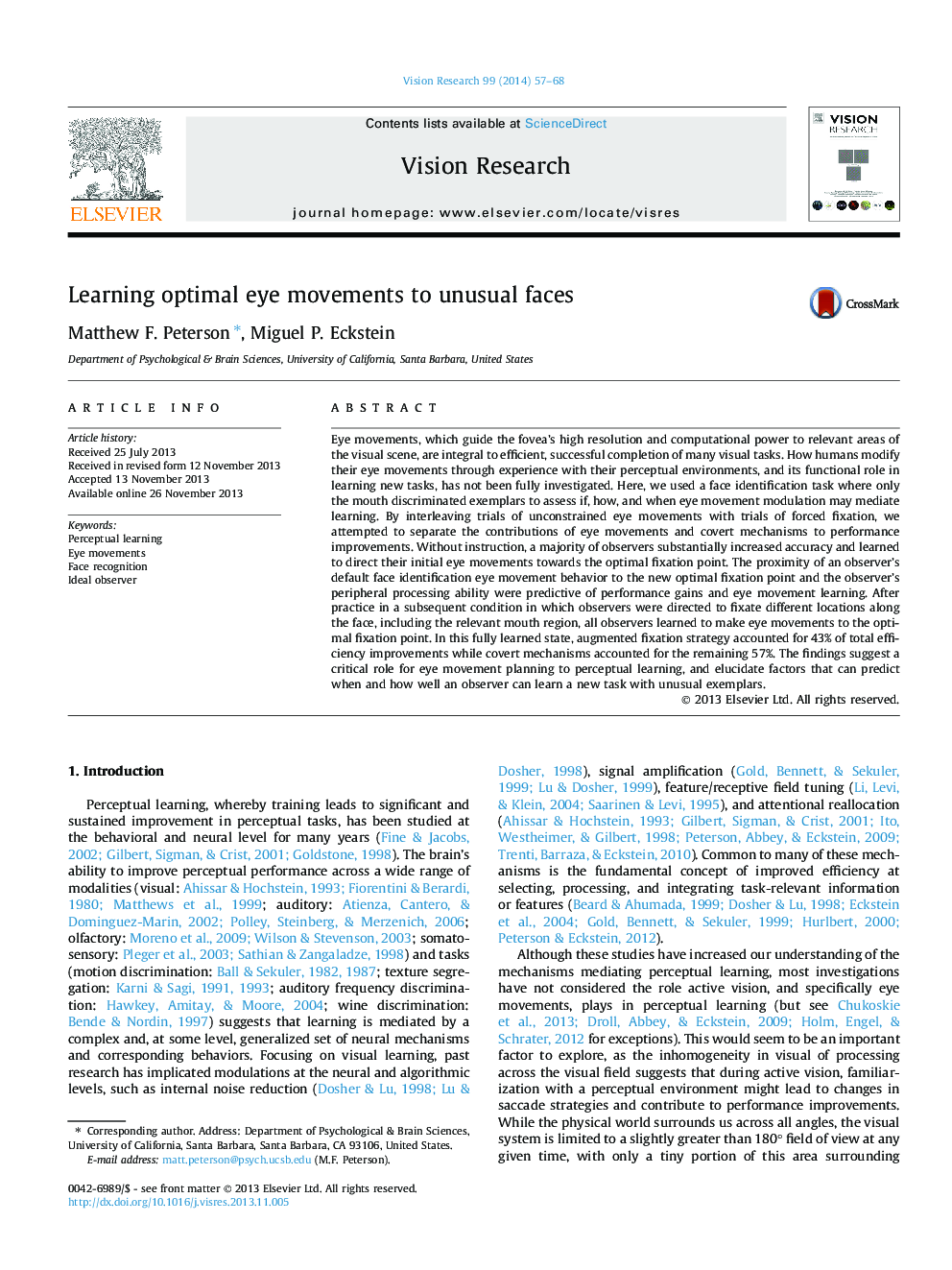| کد مقاله | کد نشریه | سال انتشار | مقاله انگلیسی | نسخه تمام متن |
|---|---|---|---|---|
| 6203423 | 1603195 | 2014 | 12 صفحه PDF | دانلود رایگان |
- Assessed the role of eye movement modification for perceptual learning.
- Eye movements can account for a large portion of learning (here, 43%).
- Learning can be predicted by default looking behavior and peripheral ability.
- Guided exploration of a novel stimulus greatly facilitates learning.
Eye movements, which guide the fovea's high resolution and computational power to relevant areas of the visual scene, are integral to efficient, successful completion of many visual tasks. How humans modify their eye movements through experience with their perceptual environments, and its functional role in learning new tasks, has not been fully investigated. Here, we used a face identification task where only the mouth discriminated exemplars to assess if, how, and when eye movement modulation may mediate learning. By interleaving trials of unconstrained eye movements with trials of forced fixation, we attempted to separate the contributions of eye movements and covert mechanisms to performance improvements. Without instruction, a majority of observers substantially increased accuracy and learned to direct their initial eye movements towards the optimal fixation point. The proximity of an observer's default face identification eye movement behavior to the new optimal fixation point and the observer's peripheral processing ability were predictive of performance gains and eye movement learning. After practice in a subsequent condition in which observers were directed to fixate different locations along the face, including the relevant mouth region, all observers learned to make eye movements to the optimal fixation point. In this fully learned state, augmented fixation strategy accounted for 43% of total efficiency improvements while covert mechanisms accounted for the remaining 57%. The findings suggest a critical role for eye movement planning to perceptual learning, and elucidate factors that can predict when and how well an observer can learn a new task with unusual exemplars.
Journal: Vision Research - Volume 99, June 2014, Pages 57-68
